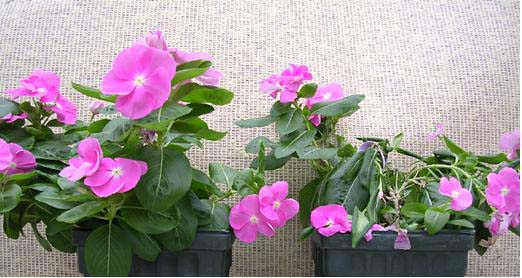| Endophytes and Xylella fastidiosa |

|
Xylella fastidiosa and Sweet Orange
Citrus variegated chlorosis is a disease of sweet orange caused by the bacterium Xylella fastidiosa. All varieties of sweet orange are susceptible to this disease, and the severity of the disease is increasing in Brazil, where it reduces the yield of usable fruit. However, in some severely diseased groves, individual trees are sometimes observed to be infected by Xylella fastidiosa without showing severe disease symptoms. These trees are not genetically resistant to the pathogen, because when new trees are propagated from them by bud grafting, they are just as susceptible to the disease as any other sweet orange.
What is protecting these trees from the disease in the groves? Researchers from the University of S?o Paulo isolated Xylella fastidiosa as well as other bacteria from these trees. These bacteria were used in our laboratory to inoculate periwinkle plants in a greenhouse. Periwinkle plants are a convenient host for experiments with Xylella fastidiosa.
We show in this work that one of these bacteria isolated from healthy appearing, but infected sweet orange, can colonize periwinkle plants after experimental inoculation. Plants inoculated with Curtobacterium flaccumfaciens and Xylella fastidiosa did not develop symptoms typical of Xylella fastidiosa infection. We also developed a sensitive test for the presence of Curtobacterium flaccumfaciens in inoculated plants. Our results will be of interest to scientists working on biologically based controls for plant diseases.


We have performed similar experiments with another bacterium also isolated from sweet orange trees in S?o Paulo that were suffering from citrus variegated chlorosis disease. We have developed quantitative assays for this bacterium, Methylobacterium mesophilicum as well. M. mesophilicum tends to reduce the populations of X. fastidiosa when both strains are inoculated together into Catharanthus roseus (periwinkle) plants
Publications: